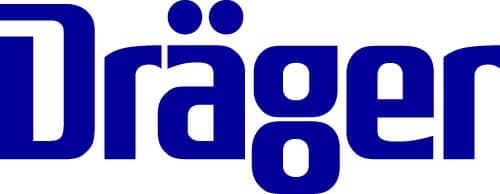Deciding to replace ventilators that are outdated or upgrading the fleet of ventilators is a major move for the respiratory department. The cost of a full-function, full-feature ventilator has reached typically $25,000 or more, and depending on the size of the hospital in terms of ICU beds and patient requirements, the purchase of a new fleet may be approaching (or over) a millions dollars. The COVID-19 pandemic brought a critical need in several regions in the U.S. for more ventilators. New ventilators were produced for use in the pandemic and some of the lessons learned due to this response can help guide the considerations for what ventilators to purchase.1 This article will discuss the seven areas that should be explored in making the decision on which ventilators should be purchased.
1. Cost
The purchase price of a ventilator is generally the first point to consider. Usually, the higher the price, the more functions and features are included in the sophistication and complexity of the machine. Often, as the number of units needed goes up, the price per unit will drop. Beyond the ventilator itself, other costs should be considered including the cost of maintaining the unit (including preventive maintenance parts, training for the Biomedical team and/or cost for outside technicians to perform the work), and possible costs for special circuits and other disposables.
The warranty on the devices can help offset the initial costs if repairs are needed. The conditions and time period covered by the warranty should be evaluated and considered in the purchase. Impact on patient outcomes should also be considered as an offset to cost. New technology may be able to reduce the time needed for providing mechanical ventilation support, shorten days in ICU, or length of stay in the hospital thus justifying a more expensive device by improving patient outcomes. Sometimes the ventilators that are being retired or replaced can factor into the purchase in terms of trade-ins or may be sold (or donated) to offset costs of new equipment. Finally, the cost to upgrade the fleet later after purchase may be a factor but often this cannot be determined at the time of purchase.
2. Features and functions
As the new COVID-19 ventilators began to be utilized, shortcomings became apparent.1 Based on the evaluation of these ventilators, consideration of a new fleet of machines should keep these issues in mind. An article in Chest from February 2021 provides the detailed analysis of the COVID-19 ventilators and can give insight into what functions and features are important in considering the investment in a new fleet.1 Since children make up some 25% of the population, they need to be considered for candidates when ventilation is needed. This means that the tidal volumes delivered should be capable of landing in the range of 30 – 50 mL and suitable trigger sensitivity to accommodate the young.1 Graphics have become a standard in the ICU to monitor pressure-time, flow-time, volume-time scalars as well as flow/volume and pressure/volume loops.2 These have proven invaluable in fine-tuning the delivered breaths and correcting asynchrony.2
For ventilator modes, a new fleet should provide the common pressure control and volume control modes using either continuous mechanical ventilation (CMV) or synchronized intermittent mechanical ventilation (SIMV). Many devices are now offering high flow oxygen therapy and are capable of full non-invasive ventilation (NIV) including Continuous Positive Airway Pressure (CPAP) and Bi-level Positive Airway Pressure (BiPAP). Volume-Assured Pressure Support (VAPS) ventilation has also shown value as a NIV approach and should be included in the available modes.3
The new fleet of ventilators should be capable of interfacing with the electronic health record as documentation becomes more digitalized. With COVID-19 and other diseases bringing special isolation precautions, ventilators may need to have the capacity to be monitored and have adjustments made remotely to minimize staff exposure. Also in considering isolation issues – alarms may need to have remote capability to monitor, set, and silence.
3. Turn-over time, reliability
Downtime for cleaning, resetting, and checking function should allow for quick turn-around when there is a high demand for ventilators. If there are parts that have to be processed to reset a machine after use, an adequate stock of parts in reserve is needed to allow for a quick reset. Reliability is also very important to assure that machines are ready to go when the need arises. Machines that are not functioning reduces the fleet and could lead to the need to rent replacement devices while waiting on getting them back into service.
4. Ease of use
Touch screens, automated systems, logical and user-friendly menus are important to have new machines (and new members to the RT team) ready to manage the patient-ventilator system. A new fleet may be from a manufacturer who is not well known to the team. Learning what features and functions are included, as well as understanding how to use them, may take time and resources to achieve full utilization. Manufacturers often offer on-line support, video educational support, as well as in-house training to help the staff learn about the ventilator. Effective/efficient educational materials and support helps everyone to take full advantage of the ventilator’s capabilities.
5. Mobility (and MRI compatibility)
Moving equipment to and from the ICU happens often. Devices that are easy to move reduces the physical stress on the team. The weight of the ventilator and wheels can be hard to overcome on carpeted flows, over elevator thresholds, and up/down ramps. In addition, while it is likely not all of the fleet needs to be compatible with the MRI environment, but some of the ventilators may need to have non-ferromagnetic components made of aluminum alloy and other materials to allow for safe use in the MRI suite.
6. Upgrades and innovation
The new ventilators should be able to upgrade as new computer software is developed or new features become available. Innovation happens all the time as manufacturers strive to improve ventilator function, make machines more intuitive, accommodate changes to improve safety, or remediate other issues that may arise. Downtime during upgrades should be minimized by the manufacturer and their support team with upgrades being done by either the manufacturer or by the hospital’s biomedical department. Machines that are capable of upgrades will likely prolong the useful life of the device, but as stated earlier, the cost to upgrade may be an unknown factor.
7. RT staff and physician input
Finally, including the input from the RT staff and the physicians who will be closely working with the staff can help make the right choice on investing in the best devices. As prospective ventilators are given an evaluation period, gathering input from the team is important and can avoid buyer’s remorse. A weighted decision-making matrix can help track each machine that comes through the department and provide a means to score each one objectively.4, 5 This tool is also know by other names (e.g. grid analysis, problem selection matrix, criteria rating form). With this approach, features are functions are given a relative “weight” and then scored by the healthcare team with the weight used as a multiplier. All known costs can be included as each item is entered into a table. When tracking four or five ventilators for evaluation, looking at several desirable functions or features, considering all the costs plus the warranty, having a good system in place for performing the process and making a decision can be most helpful.
References
- Branson R, Dichter JR, Feldman H, Devereaux A, Dries D, Perry Jr JF, Benditt J, Hossain T, Ghazipura M, King M, Baldisseri M. The US Strategic National Stockpile (SNS) Ventilators in COVID-19: A Comparison of Functionality and Analysis regarding the Emergency Purchase of 200,000 devices. Chest. 2020 Sep 21.
- Dexter AM, Clark K. Ventilator graphics: scalars, loops, & secondary measures. Respiratory Care. 2020 Jun 1;65(6):739-59.
- Zhang X, Yang P, Guo C, Li S, Zhang Y. Effects of volume-assured pressure support noninvasive ventilation in stable COPD with chronic respiratory failure: Meta-analysis and literature review. Heart & Lung. 2020 May 1;49(3):287-95.
- See the Infonautics blog: https://www.infonautics.ch/blog/decision-matrix/. Accessed 8/2/2021
- See the Lucidchart blog: https://www.lucidchart.com/blog/how-to-make-a-decision-matrix. Accessed 8/2/2021.
About the author
Bill Pruitt, MBA, RRT, CPFT, AE-C, FAARC, is a writer, lecturer, and consultant. He recently retired from over 20 years teaching at the University of South Alabama in Cardiorespiratory Care, and has over 40 years experience in respiratory care in many aspects of the profession. He also volunteers at the Pulmonary Clinic at Victory Health Partners in Mobile, AL.
Sponsored by

Medqor is committed to protecting and respecting your privacy. We may contact you about our products and services or share information with sponsorship partners, as well as other content that may be of interest to you. By submitting your information, you consent to us contacting you for this purpose in accordance with our privacy policy.
For further information, please check out our privacy policy here










